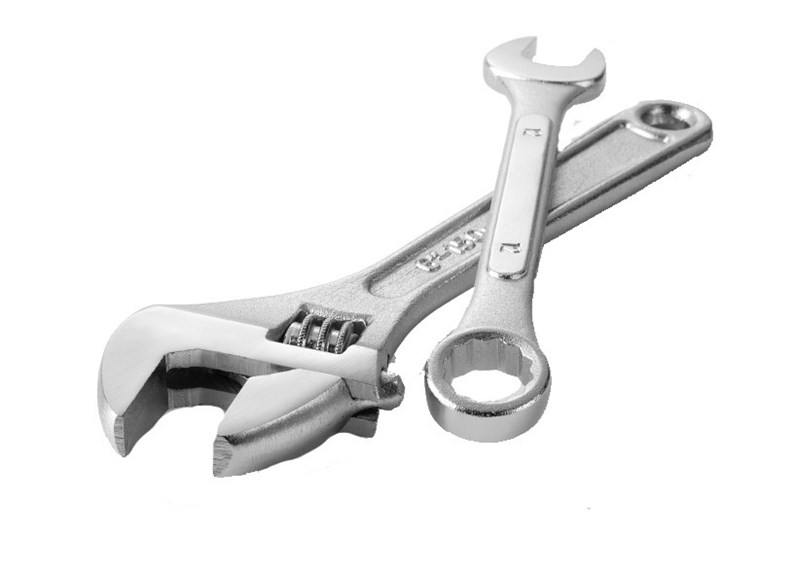Successful property owners and managing agents routinely obsess about maintenance issues—everything from minor cosmetics to major structural or mechanical improvements. You must think about the roof over your residents' heads, and carefully consider the outside appearance of the property, as well as the paved surfaces in your complex.
Do You Need a Pavement Plan?
Parking lots, driveways, and even basketball and tennis courts take a beating from everyday use, the elements and the deteriorating effects of time itself. What can you do, as a property owner or managing agent, to cost-effectively maintain and repair your paved surfaces when needed? Or, perhaps more importantly, how can you avoid a complete pavement replacement, which could cost several dollars per linear foot.
Like most other contractors, professional pavement specialists suggest that property owners adopt a routine maintenance schedule for their paved surfaces. A regular pavement maintenance schedule will not only save money in the long run but will also smooth cash outflows. Smart property managers will budget for periodic maintenance instead of springing for an entire repavement project.
Some contractors only suggest calling a contractor in when the paved surface in question is substantially deteriorated. But most recommend more frequent maintenance than that.
"A lot of communities wait too long before calling a contractor," says Thomas J. Eosso of Eosso Brothers Paving, Inc., in Matawan. "The pavement is often in poor condition and it is too late to apply a sealer due to the rough texture."
Eosso and other pavement contractors suggest working one-on-one with a professional from the time of the installation of the paved surface. Most contractors who install driveways and other surfaces offer pavement management programs and will set a schedule to maintain that surface.
When contractors visit your site to give you an estimate and advice on your pavement project, give them a site map. Walk the site with them and ask questions. The contractor will be looking at the pavement condition and texture and will measure all pavement and cracks in the pavement and other failed areas.
"It is important when you are starting a pavement maintenance program to have your budget in mind," says Eosso. "And it is critical to have a well-managed pavement plan with a mapping system. Most contractors can set a program and give you basic pricing. If the pavement is in really poor condition, I suggest contacting an engineer also to evaluate the situation."
At the very least, make sure to get references from any contractor you consider hiring. You should ask about the other paving jobs the company has done and go and view the results. Professional pavement contractors can charge anywhere from 55 cents to $2.00 per linear foot of pavement. Also, their recommendations on what kind of pavement you should put in—and how you should maintain those surfaces—may vary considerably.
Stan Zawadzki, an estimator for Bill Westervelt Asphalt Paving in Edison, agrees. "Since you get what you pay for, always check references and use local companies," he suggests.
Think also about what type of pavement you decide upon for different uses. Many contractors use a commercial grade asphalt course for driveways, which is not only less expensive per linear foot but is also a smoother surface since it has more sand in it. The material used for parking lots and roadways is a more durable mix, with more aggregate (stone) for strength.
All pavements are built for flexibility so that, in the winter months, it will be fluid and move during the freezing and thawing cycle that can crack the surface.
"A lot of reasons may cause pavement to fail," says Eosso. "If the pavement is not thick enough and is used by garbage trucks, buses and heavy truck traffic, the roadway will not have a useful life." He describes a sample specification for a roadway as being six inches of gravel topped with four inches of state coarse mix base and two inches of state mix IV top mix. According to the New Jersey Department of Transportation (NJDOT), the various designated "state mixes" refer to the various standard aggregate-to-sand mixtures recommended by the NJDOT for particular types of surfaces. A mix that works well for shouldering highways might not be recommended for parking lots because its surface finish could be a bit rough and would be more difficult to place and compact into the confined geometry of a parking lot, for example.
Eosso says that it is important that proper specifications are used for roadways and parking lots and that yearly routine maintenance, such as sealing, crack-filling, and patching, is followed.
Seal Your Investment
Pavement gets damaged by various factors, such as gasoline, ultraviolet rays, water, ice, and heavy vehicles—like fuel oil trucks, garbage trucks, concrete trucks and school buses. You can delay the disastrous effects of these factors by maintenance as simple as applying a seal coat to cracks and fissures that develop in the surface of the pavement. This goes for both associations and for individual homeowners.
Kevin Fimiani, the owner of Fimiani Construction in Edison, recommends applying a seal coat from the time of the initial installation of the surface. This seal coat, which can be purchased from most home improvement stores for smaller projects, should be reapplied once a year for most driveways, paved recreational areas and parking lots, and every three to four years for other roadways. If you're having an entire surface repaved, your contractor will likely figure a sealant into the cost of the job. Otherwise, you can head down to Home Depot and get the supplies to do it yourself.
For those interested in sealing their own driveway or backyard basketball court, Fimiani says, "Do it when the weather's hot, not cold out. But do seal coat it - that will help it last longer."
Eosso notes that it is important to wait a minimum of three to six months after your paved surface is installed before you apply a seal coat. And then, when you're ready for the task, be certain to purchase a quality sealer with sand in the mix.
"The most important part of seal coating is being neat," says Eosso. "If sealer gets on concrete or curbing, it will not come off. Many homeowners do their own seal coating, which is fine [but] professional seal coat companies are very neat and use heavy-duty sealer. Sealer can be very messy and if not installed properly, it can be a nightmare." Zawadzki agrees that professionals should be called. "Remember that you get what you pay for. When you need to spend money, call a professional since even minimal preventative maintenance starts when the sun comes up and nothing gets younger."
Seal coat should be applied from the time the surface is new. Eosso recommends waiting until the next season to seal coat it the first time, and then seal coat it every few months throughout the summer, spring, and fall, since the first year the sealer is applied, the pavement will absorb the sealer like a sponge. Then, in the following year, the surface will start to look smoother and shinier.
"It's very important to not over-seal, since it will crack," suggests Eosso. "A good rule of thumb with sealer is that when you can see the color of the stones, reseal." That interval will depend on the quality of sealant used and the amount of traffic on the given surface.
Filling In the Cracks
Crack-filling is priced by the linear foot and could cost anywhere from 55 cents to $2.00 per foot. When you contact a contractor, you might want to inquire about whether they have a minimum call-out fee, which could go as high as $2,500. Some contractors base their fee on how many crack repairs you need, rather than raw footage measurements.
"If you have less cracks, it's more money," says Fimiani. "If you have more cracks, it's a little cheaper [per foot]."
Contractors call the larger cracks—or the failed pavement—"alligator" cracks and do not recommend merely filling these. Only cracks from one- to three-quarter inches should be filled. Anything larger than that should be patched with asphalt, or with the same mixture of sand and aggregate that was used in the original pavement.
A Complete Overhaul
If the existing pavement is cracked very badly, it may even need to be reconstructed or replaced. The contractor will then remove and dispose of the damaged pavement and install completely new pavement. Occasionally, badly cracked asphalt can be broken up, re-ground, and used to repave the surface, thus recycling the material and saving the association some money.
"It might have to be milled out," says Fimiani. "They grind the blacktop, sweep it, tar-coat it, and then put about two-and-a-half inches [of new material] back over [the old]."
Some things to think about before replacing a driveway or other paved surface include drainage, thickness of the material that's going down, and the expected use of the surface. Also, consider whether the new surface will need to be regraded so that the water rolls off as it should. If the surface is too flat, or is graded improperly, the water may roll back toward buildings like garages and cause problems.
"Engineers design for conditions," says Zawadzki. "Common enemies are water, ice, and snow." He suggests considering weight-bearing, flexibility, and the freezing-and-thawing cycle before planning how to proceed with your pavement project.
Most contractors suggest waiting a minimum of 24 hours before using a repaved or repaired surface again. In the spring and fall, the total period of drying time is only two to four days, but the surface can usually be used sooner. During hot weather, you'll need to stay off the surface for three to five days. Even a year after the repavement, twisting and turning tires can scuff the surface, since pavement can get very tender in the hot afternoon sun.
Eosso suggests implementing your pavement management program as soon as you know you'll need it. Pavement season is generally March through December each year, though most contractors will visit your properties throughout the winter and spring months.
"Most contractors are completely booked by September [for the following spring]," he warns. "So it's important to start in the cold months and get on their busy work schedule as soon as possible."
Domini Hedderman is a freelance writer based in Erie, Pennsylvania, who owns and manages a small residential real estate portfolio.







Leave a Comment